How to implement VLAN unidirectional access through ACL configuration of Business Router
TL-ER7206( V1 ) , ER7206( V1 )
Recent updates may have expanded access to feature(s) discussed in this FAQ. Visit your product's support page, select the correct hardware version for your device, and check either the Datasheet or the firmware section for the latest improvements added to your product. Please note that product availability varies by region, and certain models may not be available in your region.
Note: This article only applies to ER7206_v1 and the router needs to be upgraded to v1.2 firmware, only supported in Standalone mode.
User’s Application Scenario
Administrators can access computers in all VLANs for data backup, while computers in other VLANs are not allowed to access the administrator's VLAN to improve data security..
How can I do that?
Suppose two VLANs are created on the router: VLAN 30 (192.168.30.1/24) and VLAN 50 (192.168.50.1/24), it is required that devices in VLAN 50 cannot access devices in VLAN 30, while devices in VLAN 30 can access Devices with VLAN 50.
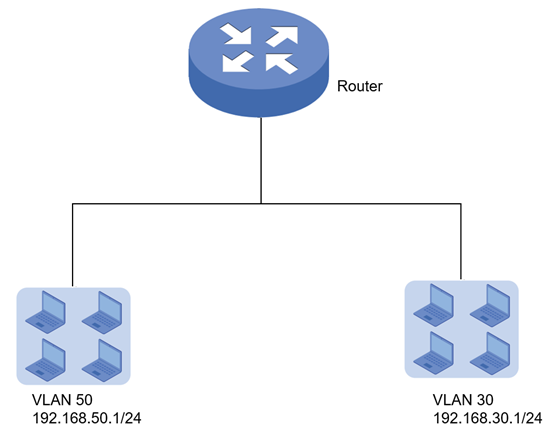
Configuration
Step 1. Create VLAN 50 and VLAN 30 on the router.
Step 2. Create IP Groups corresponding to VLAN 50 and VLAN 30.
Go to Preference----IP Group, First create an IP address range corresponding to the VLAN, and then apply the created IP address to the IP Group.
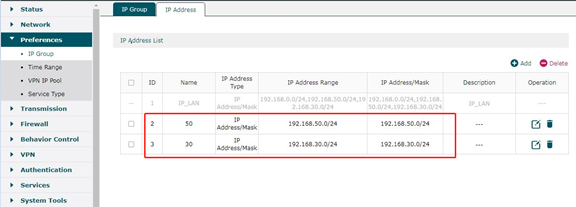
Step 3. Create an ACL to block access from VLAN 50 to VLAN 30.
Go to Firewall-----Access Control, create an ACL entry as shown in the figure below, please note that the Direction should be selected as ALL.
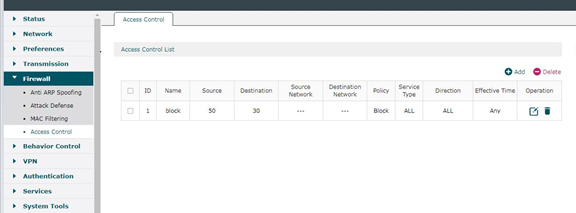
Step 4. Verification process
Devices in VLAN 50 cannot ping devices in VLAN 30, while devices in VLAN 30 can ping devices in VLAN 50.
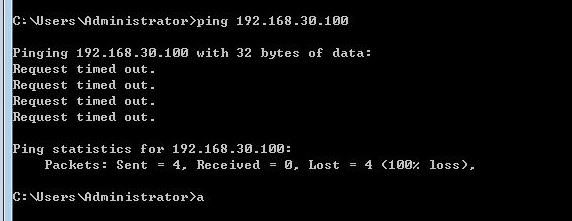
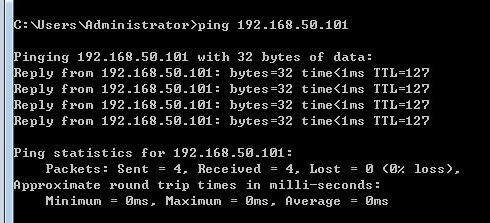
Get to know more details of each function and configuration please go to Download Center to download the manual of your product.
Related FAQs
- How to build up a multi-nets network via Multi-Nets NAT feature on TP-Link router with L2+/L3 switches
- How to set up access rules for TP-Link SMB router?
- How to configure MAC ACL on Smart and L2 Managed switches using the new GUI
- How to create multi networks and manage network behavior with ACL on Omada Gateway in standalone mode
Ez a GY.I.K. hasznos volt?
Véleménye segíti az oldal fejlesztését
What’s your concern with this article?
- Dissatisfied with product
- Too Complicated
- Confusing Title
- Does not apply to me
- Too Vague
- Other
Thank you
We appreciate your feedback.
Click here to contact TP-Link technical support.
Recommend Products
Ez a weboldal cookie -kat használ a weboldal navigációjának javítása, az online tevékenységek elemzése és a felhasználók számára a legjobb élmény biztosítása érdekében. A cookie -k használata ellen bármikor tiltakozhat. További információt az adatvédelmi irányelveinkben talál.
Ez a weboldal cookie -kat használ a weboldal navigációjának javítása, az online tevékenységek elemzése és a felhasználók számára a legjobb élmény biztosítása érdekében. A cookie -k használata ellen bármikor tiltakozhat. További információt az adatvédelmi irányelveinkben talál.
Alap Cookie-k
Ezek a cookie -k a webhely működéséhez szükségesek, és nem tilthatók le a rendszereiben.
TP-Link
accepted_local_switcher, tp_privacy_base, tp_privacy_marketing, tp_smb-select-product_scence, tp_smb-select-product_scenceSimple, tp_smb-select-product_userChoice, tp_smb-select-product_userChoiceSimple, tp_smb-select-product_userInfo, tp_smb-select-product_userInfoSimple, tp_top-banner, tp_popup-bottom, tp_popup-center, tp_popup-right-middle, tp_popup-right-bottom, tp_productCategoryType
Live-Chat
__livechat, __lc2_cid, __lc2_cst, __lc_cid, __lc_cst, CASID
Youtube
id, VISITOR_INFO1_LIVE, LOGIN_INFO, SIDCC, SAPISID, APISID, SSID, SID, YSC, __Secure-1PSID, __Secure-1PAPISID, __Secure-1PSIDCC, __Secure-3PSID, __Secure-3PAPISID, __Secure-3PSIDCC, 1P_JAR, AEC, NID, OTZ
Marketing és Elemző Cookie-k
Az elemző cookie -k lehetővé teszik számunkra, hogy elemezzük weboldalunkon végzett tevékenységeit, hogy javítsuk és módosítsuk webhelyünk működését.
Hirdetési partnereink a weboldalunkon keresztül marketing cookie -kat állíthatnak be annak érdekében, hogy érdeklődési körének profilját, és hogy releváns hirdetéseket jelenítsen meg más webhelyeken.
Google Analytics & Google Tag Manager
_gid, _ga_<container-id>, _ga, _gat_gtag_<container-id>
Google Ads & DoubleClick
test_cookie, _gcl_au
Meta Pixel
_fbp
Crazy Egg
cebsp_, _ce.s, _ce.clock_data, _ce.clock_event, cebs
lidc, AnalyticsSyncHistory, UserMatchHistory, bcookie, li_sugr, ln_or
1.0_normal_1609659027171k.png)